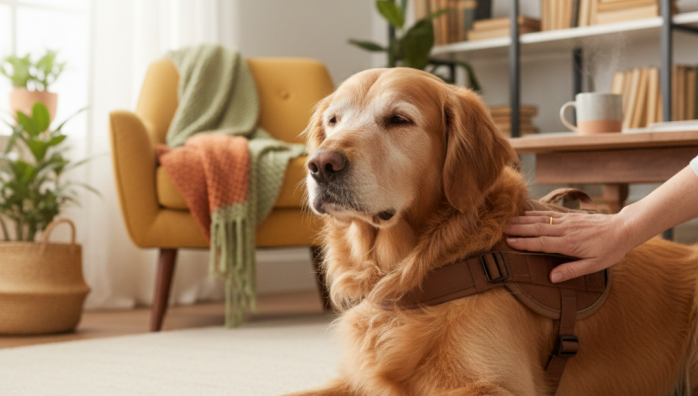Mobility Aids for Aging Dog Joints
by admin in Pet Care Basics 21 - Last Update November 21, 2025

Watching my best friend slow down was one of the hardest things I’ve experienced as a pet owner. For years, my dog was a whirlwind of energy, but as he entered his golden years, I started noticing little things. A hesitation before jumping on the couch, a slower pace on our walks, a bit of stiffness after a long nap. It wasn\'t one big event, but a slow, heartbreaking progression. I knew I had to do something to help him maintain his comfort and dignity, which started my journey into the world of mobility aids.
Recognizing the early signs of joint discomfort
Honestly, it\'s the subtle shifts that you notice first. For us, it began with him choosing the rug over the hardwood floor to lie down. Then, he’d wait at the bottom of the stairs, looking up at me as if asking for permission not to climb them. He wasn\'t crying out in pain, but his body language told me everything I needed to know. He was uncomfortable. Recognizing these quiet signals is the first, most crucial step. It’s not about them being \'old\'; it’s about them needing a new kind of support from us.
My first steps: simple home modifications
Before I even thought about harnesses or ramps, I looked around my home from his perspective. Those beautiful, slick hardwood floors were suddenly an ice rink for his aging paws. My first and most impactful change was simple: I bought several runners and area rugs. Placing them along his most common pathways—from his bed to his water bowl, from the living room to the back door—gave him immediate confidence. The grip under his paws made a world of difference. It was an easy win that cost very little but paid off in a big way for his stability.
Upgrading comfort with orthopedic beds and ramps
The next big \'aha\' moment for me was realizing his old, flattened bed wasn\'t cutting it anymore. I invested in a high-quality orthopedic dog bed made with memory foam. The first time he sank into it and let out a deep sigh, I knew I’d made the right choice. It supported his joints, cushioned his pressure points, and helped him get up with visibly less effort. Around the same time, getting into the car became a challenge. I bought a lightweight, foldable ramp. It took some patience and a lot of treats to teach him to use it confidently, but it completely eliminated the painful lifting and jumping that was straining his back and shoulders—and mine!
Choosing the right kind of support
Not all beds or ramps are created equal. For the bed, I learned to look for at least four inches of dense, supportive foam. For the ramp, a high-traction surface was non-negotiable. It’s these little details that transform a product from a simple accessory into a genuinely useful mobility tool.
When to consider harnesses and support slings
As his mobility needs evolved, there were days when he needed more direct help. This is where a good support harness became my go-to tool. I\'m not talking about a walking harness, but a specific mobility sling designed to help lift the rear or front end. It was a lifesaver for getting him up the porch steps on \'bad\' days or helping him keep his balance on slippery surfaces. It allowed me to support his weight without awkwardly grabbing him or putting pressure on his sensitive joints. It gave him freedom, and it gave me peace of mind. Of course, this is just what worked for us, and I always made these decisions after a quick chat with our vet to make sure I was providing the right kind of support.
Ultimately, helping an aging dog navigate the world is an act of love. It’s about being observant, creative, and proactive. These aids didn\'t turn back the clock, but they absolutely improved my dog’s quality of life, allowing us to enjoy our precious time together with more comfort and happiness.













